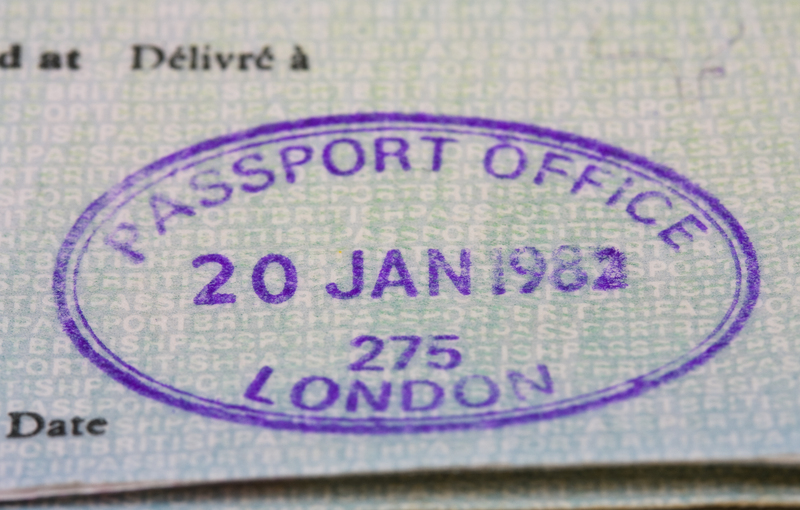Must-Do Steps Before Storing Away Your Freezer
Freezers are a valuable appliance in every household, ensuring food preservation, convenience, and efficiency. However, whether you're preparing for a move, remodeling your kitchen, or simply taking a seasonal appliance out of use, preparing your freezer for storage is a step that should not be overlooked. Properly storing away your freezer helps prolong its lifespan, prevents damage, and saves you from costly repairs or unpleasant surprises. In this comprehensive guide, discover the must-do steps before storing away your freezer to ensure your appliance remains in peak condition.

Why Correctly Preparing Your Freezer for Storage Is Crucial
Many homeowners underestimate the importance of proper preparation before storing their freezer. Neglect in this process can lead to:
- Mold and mildew growth within the unit
- Permanent odors and unsanitary conditions
- Damage to internal components and seals
- Electrical or mechanical issues upon re-use
- Reduced overall appliance lifespan
By following the right procedure before you store your freezer, you'll protect your investment and enjoy hassle-free reactivation when you need it again.
Step-by-Step Instructions: Preparing Your Freezer for Storage
1. Unplug and Empty Your Freezer
The very first step in storing away your freezer is to turn it off and remove all of its contents:
- Unplug the freezer from the electrical outlet. Ensure your hands are dry and that the area around the outlet is safe from water spillage.
- Carefully check all drawers, shelves, and corners for any hidden food or items that may have slid behind. A missed item can spoil and cause major issues later.
- Dispose of expired or unwanted food items. Consider donating still-edible, unopened goods to local food banks if they haven't thawed.
- Transfer reusable items to a backup freezer or cooler with ice packs to prevent spoilage.
Tip: Make use of this opportunity to organize and inventory the items in your freezer. You might rediscover forgotten ingredients or identify items you no longer need.
2. Defrost Your Freezer Completely
Modern freezers may come with auto-defrost features, but manually defrosting your freezer before storage is a must for all types:
- Leave the freezer door open after unplugging to allow warm air to circulate and melt any accumulated ice or frost.
- Place towels or trays under and around the appliance to absorb melting ice water and prevent floor damage.
- Never use sharp objects or knives to chip away ice--this can severely damage the inner lining. If you need to speed up defrosting, use a bowl of hot (not boiling) water placed inside the freezer compartment and close the door for a while.
- Wait until all ice is fully melted and water has been wiped away before continuing to the next step.
Failing to defrost properly can result in trapped moisture, which may freeze, expand, and damage components or harbor mold during storage.
3. Clean and Sanitize the Interior and Exterior
An essential part of freezer storage preparation is thorough cleaning:
- Use a mixture of mild dish soap and warm water to wipe down every surface, including shelves, drawers, and rubber door seals.
- For deeper sanitization, mix a solution of one tablespoon of baking soda dissolved in a quart of warm water. This neutralizes odors and helps clean without leaving toxic residues.
- Remove and wash any removable shelves or bins separately. Let all parts dry thoroughly before replacing them.
- Wipe the exterior casing and back panel (where dust often accumulates on vents and coils), ensuring ventilation components are spotless and unobstructed.
Do not use harsh chemicals such as bleach or ammonia, as these can damage surfaces and leave harmful residues.
4. Ensure the Freezer is Completely Dry
Moisture is the enemy of stored appliances. Even a small amount trapped inside can cause:
- Mold and mildew outbreaks
- Unpleasant odors
- Rust and degradation of components
After cleaning, use clean dry towels to carefully dry every inch of the freezer's interior and exterior:
- Leave the door open for several hours, or overnight, in a dry, well-ventilated space to ensure all moisture has evaporated.
- Inspect rubber gaskets, as these can trap water and breed mold if not fully dried. Wipe carefully and check crevices.
Pro Tip: Use a low-powered fan or hairdryer on a cool setting to speed up drying if you're short on time.
5. Neutralize Odors to Prevent Long-Term Smells
Odors trapped inside your freezer during storage can be tough to remove. To keep unpleasant smells at bay:
- Place an open box of baking soda or a few activated charcoal sachets inside the freezer.
- You can also use a small bowl of dry coffee grounds--an effective natural deodorizer.
This simple step absorbs remaining odors and ensures your freezer will smell fresh when brought back into service.
6. Secure Doors and Internal Components
If your freezer will be stored for an extended period or moved to a new location, it's essential to:
- Remove or secure loose bins, trays, and shelves with movable parts to prevent rattling or damage during transport.
- Leave the door slightly ajar by wedging a towel, rubber doorstop, or special freezer door spacer. This prevents air stagnation, mold, and mildew inside the compartment.
- Never seal the door completely shut with tape, as this traps humidity and accelerates mold growth.
Some appliances come with a "storage mode" or door latch to keep them gently open--read your manual to use built-in features.
7. Protect the Exterior and Power Cord
The exterior needs just as much attention as the inside:
- Wrap the power cord neatly and secure it to the back or side of the freezer using twist ties or velcro straps.
- Do not let the cord dangle on the floor where it can get damaged or become a tripping hazard.
- If you plan to store the freezer in a dusty environment, use a breathable appliance cover or old sheet to protect the finish. Avoid airtight plastic covers; trapped moisture can lead to corrosion or mold.
8. Choose the Right Storage Location
The environment where you store your freezer has a big impact on its longevity and performance:
- Select a clean, dry, and well-ventilated area. Avoid damp basements, garages prone to high humidity, or outdoor sheds where temperature extremes can damage internal parts.
- Place the freezer on a level surface to avoid warping or stress on hinges and gaskets. If storing on concrete, use wooden planks or pallets underneath to raise it off the floor.
- Keep the appliance out of direct sunlight, which can fade surfaces and cause overheating or electrical degradation.
Remember, moisture and extreme temperatures are the most common environmental threats during freezer storage. Your goal should always be to keep the appliance as close as possible to the conditions it operates in during normal use.
9. Inspect Regularly During Long-Term Storage
Freezers put into long-term storage, especially in seasonal homes or secondary locations, need periodic inspection:
- Every few months, check for signs of moisture, mildew, or pests.
- Ensure the door remains propped open and nothing is blocking ventilation.
- Look for evidence of cord damage from mice or insects, particularly if stored in garages or sheds.
If possible, air out the freezer occasionally and check that baking soda or charcoal odor absorbers are still effective.
Common Mistakes to Avoid When Storing Away a Freezer
- Failing to Defrost: Leaving ice in the unit can cause leaks, mold, and damage.
- Storing Food Inside: Never attempt to leave perishables inside a powered-off freezer.
- Locking the Door: Sealing the unit encourages mold and odors to form.
- Storing Outdoors: Freezers are not designed for unprotected outdoor storage.
- Ignoring the Power Cord: Unprotected cords attract pests and may suffer physical damage.
Avoid these errors to enjoy a smooth, trouble-free reinstallation when you need your freezer again.
Bonus Tips for Moving and Storing Your Freezer
- Consult your freezer's owner manual for brand-specific guidance about preparation and storage.
- If moving to a new home, transport the freezer upright whenever possible. Lying it on its side risks compressor damage and oil leakage.
- If you must tilt the appliance, let it stand upright for several hours (ideally 24) before plugging it in again to allow fluids to settle.
- Clearly label the appliance as "CLEAN AND EMPTY" to prevent confusion or accidental use by others during storage.

FAQs About Storing a Freezer
Can I Store a Freezer With the Power On?
It's generally not recommended to leave a freezer plugged in and running in storage, especially if it will be left unchecked for long periods. This can be a waste of electricity and increases risk of malfunction. Additionally, if the power fails, food inside will spoil and cause odors and contamination.
How Long Can I Store a Freezer?
A properly prepared freezer can be stored indefinitely as long as you follow the steps above and choose an appropriate location. Remember to check the appliance periodically and always leave the door slightly open.
What's the Best Way to Prevent Mold and Mildew?
The combination of thorough drying, sanitation, and propping open the door is your most effective defense against mold during freezer storage. Use odor absorbers for extra protection.
Conclusion: Protect Your Appliance Investment
Preparing your freezer for storage is more than just turning it off and walking away. By taking these essential steps to store your freezer properly, you'll preserve its functionality, protect your food safety, and extend the lifespan of a vital kitchen appliance.
- Empty, clean, sanitize, and dry every nook and cranny
- Prevent mold and odors with odor-eliminating agents and by keeping the door ajar
- Store the freezer in a suitable, dry, and clean environment
- Protect the power cord and check the appliance periodically
Following these must-do steps before storing away your freezer will ensure it's ready to serve you anew, any time you bring it back into the kitchen.
Don't skip these steps--your future self will thank you for a freezer that's clean, odor-free, and in peak condition, ready for delicious future storage!